
June Mathis, studio executive
Born June Beulah Hughes
June 30, 1889(1889-06-30)
Leadville, Colorado, U.S.
Died July 27, 1927 (aged 38)
New York City, New York, U.S.
Years active 1916–1927
Spouse(s) Sylvano Balboni (1924–1927)
June Mathis (June 30, 1889 – July 26, 1927) was one of the most influential American screenwriters and among the highest paid Hollywood executives in the 1920s.[1] A short woman with untamed brown hair and a love of Parisian fashion, she was also one of the first "writer-directors"[2] and laid the groundwork for the later development of screenwriters becoming producers.[3] The American Film
 Institute catalog credits her with 113 films in a 12-year career; among them Camille, The Four Horsemen of the Apocalypse, and Blood and Sand
Institute catalog credits her with 113 films in a 12-year career; among them Camille, The Four Horsemen of the Apocalypse, and Blood and Sand. A spiritualist with mystical bents, her scripts featured many heroes with a Christ-like demeanor. A believer in reincarnation, she always wore an opal ring when she wrote, convinced it brought her ideas. Mathis was the first female executive for Metro/MGM, and at only 35 she was the highest paid executive in Hollywood. In 1926 she was voted the third most influential woman in Hollywood, behind Mary Pickford and Norma Talmadge.[4]
Biography
Born June Beulah Hughes in Leadville, Colorado, the only child of Virginia Ruth and Dr. Philip Hughes. Her parents divorced when she was seven and her mother remarried, this time to William D. Mathis, a widower with three children whose name she would eventually adopt as a stage name. She had been a sickly child and believed she healed herself through her sheer force of will. She believed everything was mental and everyone had certain vibrations stating, "If you are vibrating on the right plane, you will inevitably come in contact with the others who can help you. It's like tuning in on your radio. If you get the right wave-length, you have your station."[2]
Mathis as a young girl
Mathis was educated in Salt Lake City and San Francisco. It was while in San Francisco she got her first stage experience, dancing and doing imitations in vaudeville. At the age of 12 she joined a traveling company and at 17 became an ingenue, performing with Ezra Kendall in The Vinegar Buyer.[2] Later she appeared in several Broadway shows and toured for four seasons with the female impersonator Julian Eltinge in the widely popular show The Fascinating Widow. Supporting her now twice widowed mother, she would continue to perform in theatre for the next 13 years.[5]
Screenwriting

Mathis was determined to become a screenwriter and with her mother in tow moved to New York City. She studied writing by day and went to the movies at night.[5] She entered a screenwriting competition; but despite not winning, her entry was so impressive it did bring job offers. Her first script, House of Tears, would be directed by Edwin Carewe in 1915 and led to a contract in 1918 with Metro studios, later known as MGM. As one of the first screenwriters to include details such as stage directions and physical settings in her work, Mathis saw scenarios as a way to make movies into more of an art form. Much of the present standard screen writing styles can be attributed to her. Mathis later credited her success to a strong concentration on plot and theme: "No story that did not possess a theme has ever really lived.... Occasionally one may make money and perhaps be popular for a time. But in the end it dies."[5]
By 1919 Mathis and her mother had moved to Hollywood. After only a year of screenwriting, she had advanced to the head of Metro's scenario department.[6] She was one of the first heads of any film department and the only female executive at Metro.[2]
During her early years she had a close association with silent star Alla Nazimova, however their films together can be said to be marked by oversentimentality. What little praise these films garned were due to Nazimova's acting rather the conventional romantic stories. [5]
The Four Horsemen of the Apocalypse
In 1921, Richard Rowland, the head of Metro paid $20,000 and 10% of the gross earning for Vicente Blasco Ibáñez's novel The Four Horseman of the Apocalypse.[7] The epic bestseller had been considered unadaptable by every major studio in the country. Rowland handed the book off to Mathis for adaptation and was so impressed with her screenplay that he asked her input on director and star. Mathis had seen Rudolph Valentino in a bit part in The Eyes of Youth, and was greatly impressed. Mathis exerted considerable influence to cast Valentino, as studio heads resisted hiring an unknown actor for a lead role.[2] Despite her many other accomplishments, this "discovery" would grow to be her best known act. For the same movie she also insisted the studio hire Rex Ingram as director.[6]
The Four Horsemen of the Apocalypse, groundbreaking on many levels, was one of the first films with an anti-war theme. Mathis also injected some early depictions of alternative lifestyles; it featured a scene with German officers coming down the stairs in drag. Of the scene, Mathis would later tell the The Los Angeles Times, "I had the German officers coming down the stairs with women's clothing on. To hundreds of people that meant no more than a masquerade party. To those who have lived and read, and who understand life, that scene stood out as one of the most terrific things in the picture."[4]
Screenwriter June Mathis on the set of Blood and Sand with star and lifelong friend Rudolph Valentino
Valentino

"The Four Horsemen" was a smashing success grossing $4,500,000 domestically, thus becoming one of the most commercial silent films ever made and launching Valentino into stardom.[5] Even before it was released, Valentino was receiving offers from other studios. Taking Mathis' advice, he remained with Metro to get another solid role or two under his belt.[7]
Mathis and Valentino remained fast friends after "Four Horsemen". There was never a question about the nature of the relationship; the older plain-looking Mathis doted on the incredibly talented beautiful young man. Accounts state that Valentino regarded Mathis in a motherly way, calling her "Little Mother." Nita Naldi, who worked with the pair on Blood and Sand, said of them, "She mothered Rudy, and my dear she worshiped him and he worshiped her". "She discovered me, anything I have accomplished I owe to her, to her judgement, to her advice and to her unfailing patience and confidence in me", said Valentino on Mathis.[2]
Mathis looked after Valentino's welfare during his time at Metro, making sure he got the best parts and was taken care of. When Valentino showed up on the set for The Conquering Power, another Mathis script with Rex Ingram at the helm, his new-found stardom went to his head, along with resentment at working for the same wage of $350 a week.[7] The friction between himself and Ingram, and his need for more money to support mounting debts led Valentino to sign with Famous Players-Lasky (later known as Paramount Pictures) for $1,000 a week.
Mathis was also one of the people who helped bail Valentino out of jail when he was arrested for bigamy having married Natacha Rambova without finalizing his divorce to Jean Acker. Though the two were inseparable, their relationship became strained during Valentino's marriage to Rambova. When Mathis submitted a script for The Hooded Falcon, one of Valentino's pet projects, the couple deemed it unacceptable and asked to have it rewritten. Mathis took it as a great insult and broke off all contact with Valentino.[2]
Executive

Mathis' position with Metro was called by the Los Angeles Times, "The Most Responsible Job ever Held by A Woman".[8] She was arguably one of the most powerful women in Hollywood, even said to be as powerful as Mary Pickford. Mathis had influence over casting, choice of director and many other aspects of production.[6] Her strength lay in careful preparation of the shooting script along with the director, cutting out waste in production while at the same time sharpening narrative continuity.[9]
After spending seven years at Metro, Famous Players-Lasky was able to lure her away with the promise that she could continue to write for her protégé Valentino. When Valentino moved to Goldwyn Pictures she did as well, this time gaining sovereign control.
Greed

Mathis continued to survive in Hollywood despite being involved in two of the greatest fiasco's of the 1920s. When Erich von Stroheim presented the studio with his masterpiece Greed,
following Frank Norris's novel McTeague pretty closely, it was 42 reels and 10 hours long. Stroheim himself reduced it to 24 reels (6 hours), hoping the film could be screened with intermissions in two successive evenings. But the studio demanded further cuts. Stroheim allowed his close friend Rex Ingram to reduce it to 18 reels (4½ hours), but Mathis was instructed by Metro to cut the film even more, which she assigned to a routine cutter, Joseph W. Farnham.[9] The film was then reduced to 13 reels (2½ hours) long.[10] There is speculation on whether Mathis took part in the actual cutting, however her name was listed in the credits and it was she who would be blamed for what Stroheim and his fans would call "tampering with his genius".[6] In fact Mathis had worked with Stroheim before and had been fond of his themes, and thus it would be unlikely she would butcher his film unnecessarily.[4]
Ben-Hur
For the 1924 production of Ben Hur, Mathis fought the studio over the casting and production for many months. It was her idea to film the one million dollar script in Italy; the film would eventually come in just under four million dollars. When she arrived the original director Charles Barbin, in his words, refused to let her "interfere". The production troubles were numerous, and due to political troubles engulfing Italy at the time, resulted in disputes and delayed permissions. When the sea battle was filmed near Livorno, Italy, many extras had apparently lied about being able to swim. The first attempt to film the chariot race was on a set in Rome, but there were problems with shadows and the racetrack surface. One of the chariots' wheels came apart and the stuntman driving it was thrown in the air and killed.
MGM inherited the production when it took over control of Goldwyn studios; with the film over budget and getting out of control, the studio halted production and relocated the shoot from Italy to California, under the supervision of Irving Thalberg. Before they had even returned from Italy, MGM would fire Mathis, Barbin and the star.[6]
Later career

Mathis had been romantically linked to George Walsh and Rex Ingram, however she returned from Italy engaged to an Italian cinematographer named 'Sylvano Balboni' (sometimes spelled as Silvano Balboni). The pair married December 20, 1924 at Mission of St. Cecilia, in Riverside, CA. Upon her return, First National hired her as editorial director. She also scripted several successful Colleen Moore pictures including Sally, The Desert Flower, and Irene. After two years she left First National over limitations and signed with United Artists. With her husband she made one picture for them, The Masked Woman.[2] The Magic Flame (1927) would be her last picture, and one of her best, due in part to Ronald Coleman's performance and Henry King's direction. [5]
Death
After Valentino's marriage with Rambova ended in 1925, the two friends reconciled at the premiere of Son of the Sheik when Valentino spotted Mathis with friends. It was said to be a tearful reunion and the pair began to act as if old times.[11] As Valentino began to feel ill in 1926 she was by his side and encouraged him to slow down and take some rest. True to her belief in the supernatural, Mathis reported seeing an apparition of Valentino in her living room the night he died.[2]
When Valentino unexpectedly died in August 1926 Mathis was said to offer this quote:
"My long association with Rudolph Valentino endeared him to me, as he has become endeared to everyone who knew him, my heart is too full of sorrow at this moment to enable me to speak coherently. I only know that his passing has left a void that nothing can ever fill in that the loss to our industry is too great to estimate at this time."[11]
Due to estate issues Valentino was left without a burial place, so Mathis offered up what she thought would be a temporary solution; she lent him her spot in the family crypt which she had purchased in Hollywood Memorial Cemetery (now called the Hollywood Forever Cemetery). However, when Mathis herself died the following year, the arrangement became permanent.[7]
On July 27, 1927, during the third act of the Broadway show The Squall, while accompanied by her grandmother Mathis suffered a fatal heart attack. Her last words were reportedly "Oh Mother I'm dying!", which has led to confusion over who she was with at the time of her death as her mother had passed a few years prior. Mathis was 39 years old.[11]
Her ashes were returned to California: instead of "evicting" Valentino, Mathis' husband, Sylvano Balboni, moved Valentino to the niche beside hers, sold the remaining crypt to Valentino's family and returned to Italy. Mathis and Valentino repose side by side to this day.
Filmography
* The Dawn of Love (1916)
* God's Half Acre (1916), scenario
* Her Great Price (1916), scenario
* The Purple Lady (1916), scenario
* The Sunbeam (1916), scenario
* The Upstart (1916), scenario
* Aladdin's Other Lamp (1917)
* Blue Jeans (1917)
* Draft 258 (1917)
* Red, White and Blue Blood (1917)
* Somewhere in America (1917)
* The Call of Her People (1917)
* Threads of Fate (1917)
* The Jury of Fate (1917), adaptation
* A Magdalene of the Hills (1917), scenario
* His Father's Son (1917), scenario
* Lady Barnacle (1917), scenario
* The Barricade (1917), scenario
* The Beautiful Lie (1917), scenario
* The Power of Decision (1917), scenario
* The Trail of the Shadow (1917), scenario
* The Voice of Conscience (1917), scenario
* A Wife by Proxy (1917), scenario, unconfirmed
* Miss Robinson Crusoe (1917), story
* The Millionaire's Double (1917), story
* A Man's World (1918)
* Eye for Eye (1918)
* Five Thousand an Hour (1918)
* His Bonded Wife (1918)
* Social Hypocrites (1918)
* Social Quicksands (1918)
* The Brass Check (1918)
* The Claim (1918)
* The House of Mirth (1918)
* The Silent Woman (1918)
* To Hell with the Kaiser! (1918)
* Daybreak (1918), adaptation
* The Eyes of Mystery (1918), adaptation
* A Successful Adventure (1918), also story
* The Legion of Death (1918), also story
* Kildare of Storm (1918), scenario
* Secret Strings (1918), scenario
* Sylvia on a Spree (1918), scenario
* The House of Gold (1918), scenario
* The Trail to Yesterday (1918), scenario
* The Winning of Beatrice (1918), scenario
* Toys of Fate (1918), scenario
* With Neatness and Dispatch (1918), scenario
* The Winding Trail (1918), story
* Almost Married (1919)
* Blind Man's Eyes (1919)
* Fair and Warmer (1919)
* Out of the Fog (1919)
* Satan Junior (1919)
* Some Bride (1919)
* The Amateur Adventuress (1919)
* The Divorcee (1919)
* The Great Victory, Wilson or the Kaiser? The Fall of the Hohenzollerns (1919)
* The Island of Intrigue (1919)
* The Man Who Stayed at Home (1919)
* The Microbe (1919)
* The Red Lantern (1919)
* The Brat (1919), also titles realisation Herbert Blache

* Johnny-on-the-Spot (1919), scenario
* Lombardi, Ltd. (1919), scenario
* Way of the Strong (1919), scenario
* The Parisian Tigress (1919), story
* Parlor, Bedroom and Bath (1920)
* The Price of Redemption (1920)
* The Right of Way (1920)
* The Walk-Offs (1920)
* The Willow Tree (1920)
* The Saphead (1920), scenario June Mathis realisation Herbert Blache
* Hearts Are Trumps (1920), scenario
* Old Lady 31 (1920), scenario
* Polly with a Past (1920), scenario
* Camille (1921), written by
* The Four Horsemen of the Apocalypse (1921)
* A Trip to Paradise (1921)
* The Conquering Power (1921)
* The Man Who (1921)
* The Idle Rich (1921), adaptation
* Turn to the Right (1922)
* Hate (1922), adaptation
* Kisses (1922), also adaptation
* The Young Rajah (1922), screenplay
* The Golden Gift (1922), story
* Blood and Sand (1922), written by
* Three Wise Fools (1923)
* In the Palace of the King (1923), adaptation
* The Day of Faith (1923), adaptation
* The Spanish Dancer (1923), adaptation
* Name the Man (1924), editorial director
* Three Weeks (1924), editorial director
* Ben-Hur (1925), adaptation
* Sally (1925)
* The Desert Flower (1925)
* We Moderns (1925)
* The Marriage Whirl (1925), editorial director
* What Fools Men (1925), editorial director
* Sally (1925), editorial supervisor
* Classified (1925), scenario
* Greed (1925), screen adaptation and dialogue
* The Greater Glory (1926)
* Irene (1926)
* Her Second Chance (1926), editorial director
* Irene (1926), editorial director
* The Far Cry (1926), editorial director
* The Girl from Montmartre (1926), editorial director
* An Affair of the Follies (1927)
* The Masked Woman (1927)
* The Magic Flame (1927), continuity
* Reno (1930)
[edit] References
Bibliography
* Acker, Ally; Marc Wanamaker (1991). Reel women: pioneers of the cinema 1896 to the present. London: Batsford. ISBN 0-7134-6960-9.
* Ellenberger, Allan R (2007-04-01). "June Mathis: Author Allan Ellenberger Discusses One of the Most Powerful Women in Hollywood History". ALT Film Guide.
* Ellenberger, Allan R. (2005). The Valentino mystique: the death and afterlife of the silent film idol. Jefferson, N.C: McFarland & Co. ISBN 0-7864-1950-4.
* Koszarski, Richard (1983). The man you loved to hate: Erich von Stroheim and Hollywood. Oxford [Oxfordshire]: Oxford University Press. ISBN 0-19-503379-5.
* Leider, Emily Wortis (2004). Dark lover: the life and death of Rudolph Valentino. New York: Faber and Faber Inc. ISBN 0-571-21114-3.
* Lipke, Kathleen (June 3, 1923). "the Most Responsible Job Ever Held by a Woman". Los Angeles Times: 13.
* Mahar, Karen Ward (2006). Women Filmmakers in Early Hollywood (Studies in Industry and Society). Baltimore: The Johns Hopkins University Press. ISBN 0-8018-8436-5.
* Slater, Thomas (2007-11-03). "June Mathis: Moving the margins of mainstream". Journal of Humanities.
* Slater, Thomas (1984). "June Mathis": Dictionary of Literary Biography vol 44, American screenwriters: second series. Detroit, Mich: Gale Research Co, 246. ISBN 0-8103-1722-2.
* Shulman, Irving (1967). Valentino. New York: Simon & Schuster.
* Unterburger, Amy L. (1999). The St. James women filmmakers encyclopedia: women on the other side of the camera. Detroit, MI: Visible Ink Press. ISBN 1-57859-092-2.
ALICE GUY CINEMA PIONEER WHITNEY MUSEUM 2009

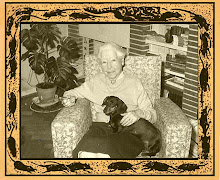
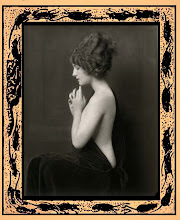
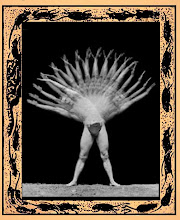
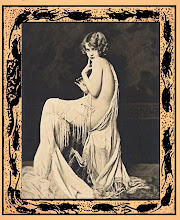

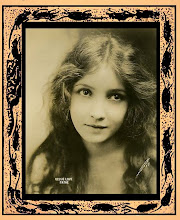
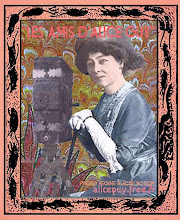
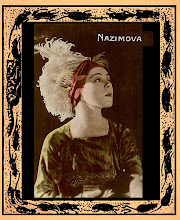
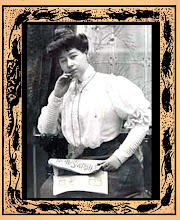

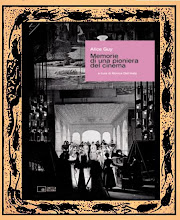
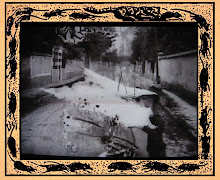
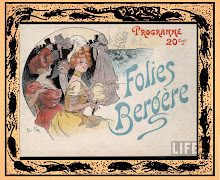

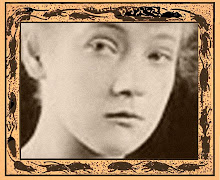
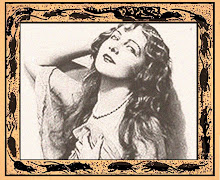
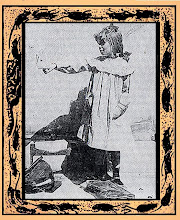

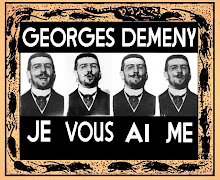
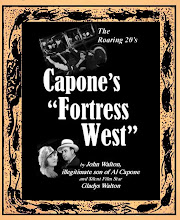
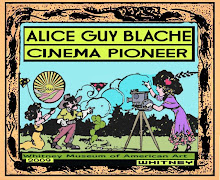
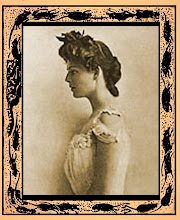

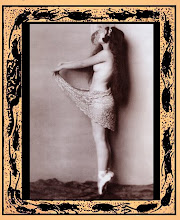
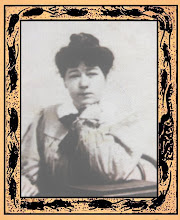
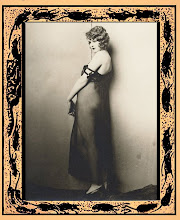


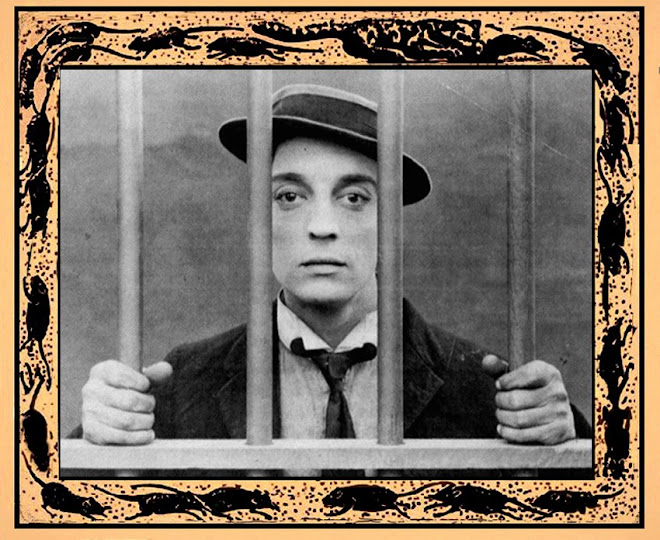
Aucun commentaire:
Enregistrer un commentaire